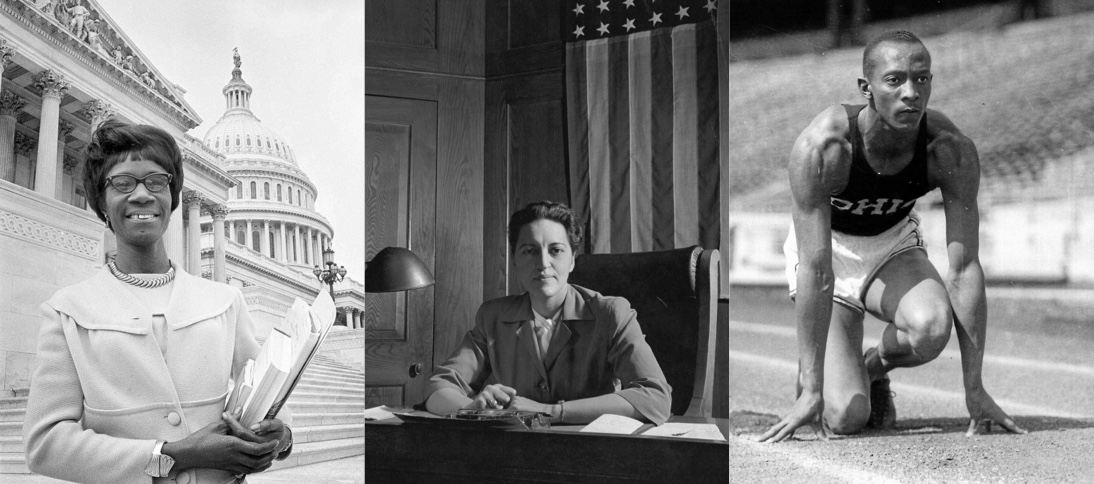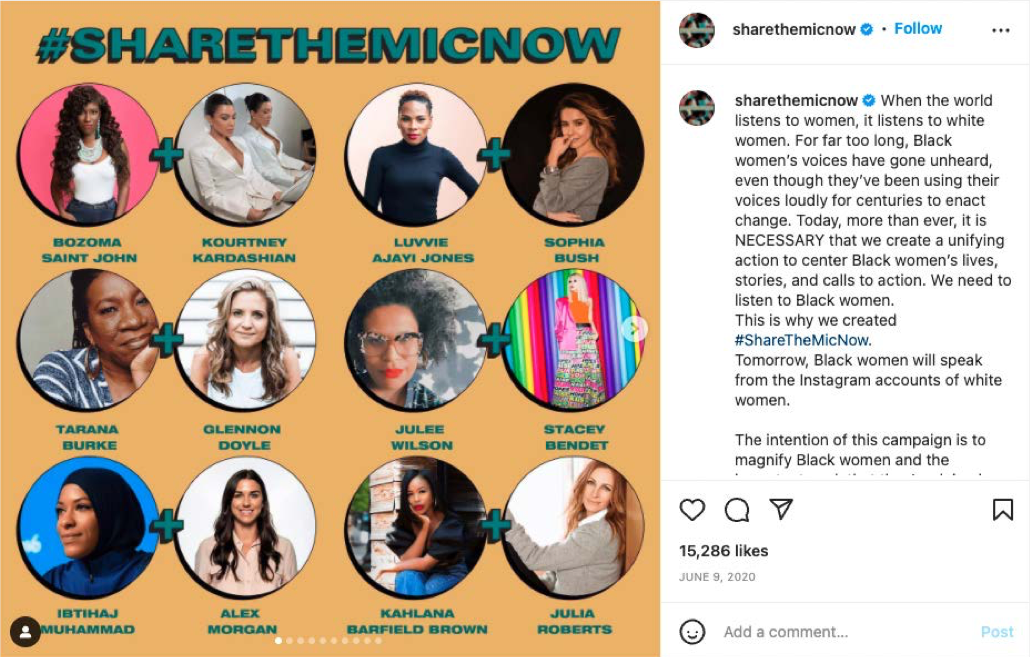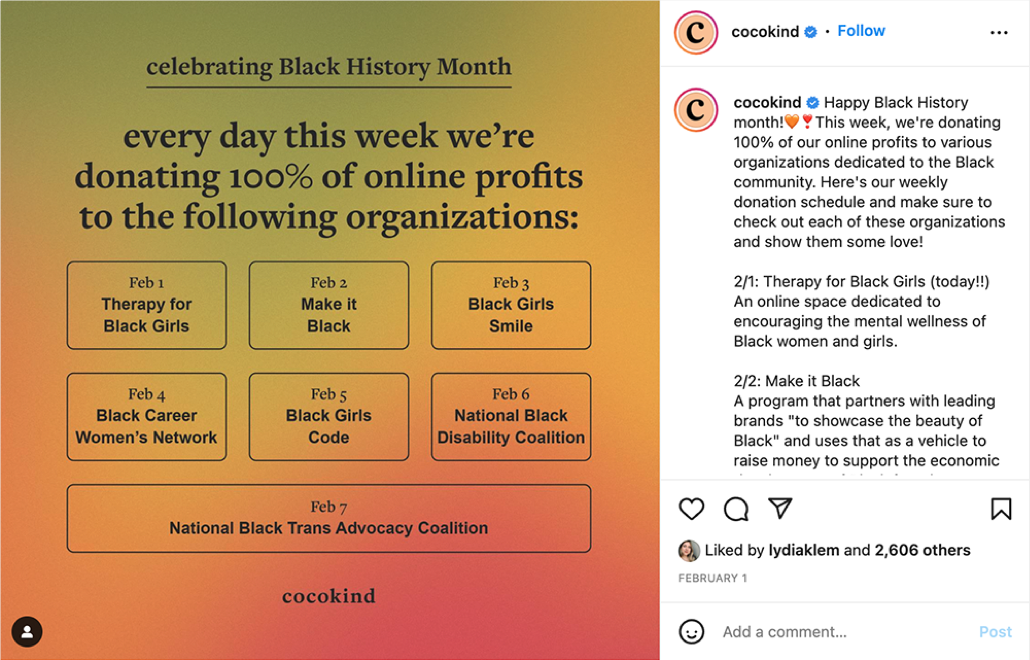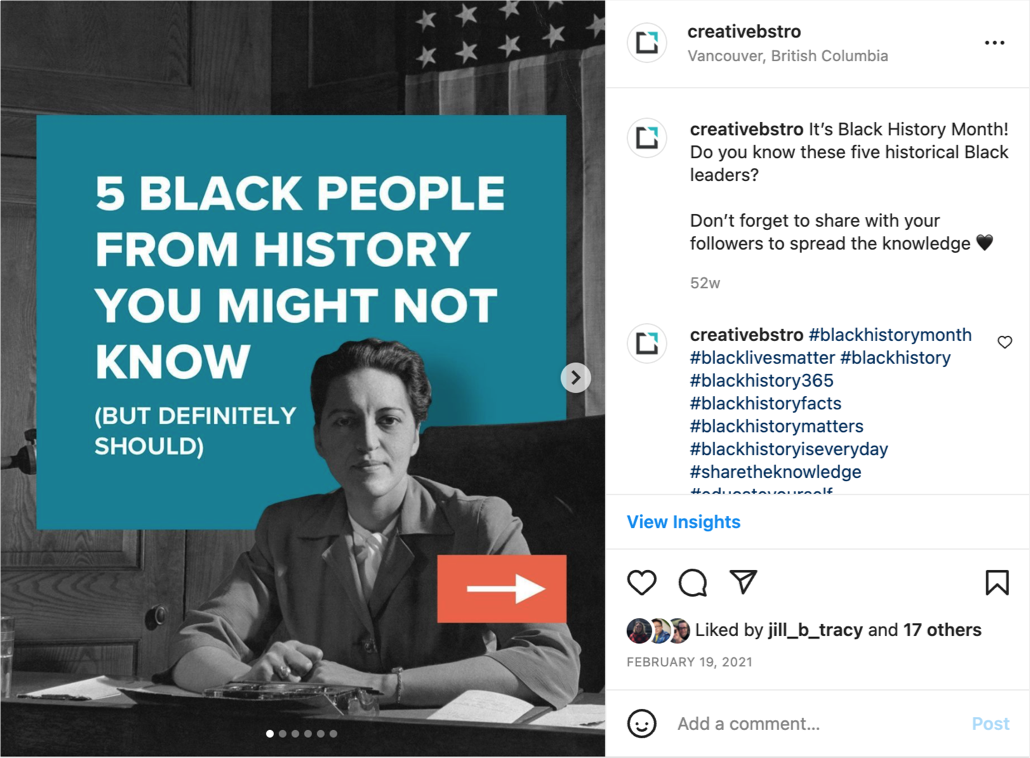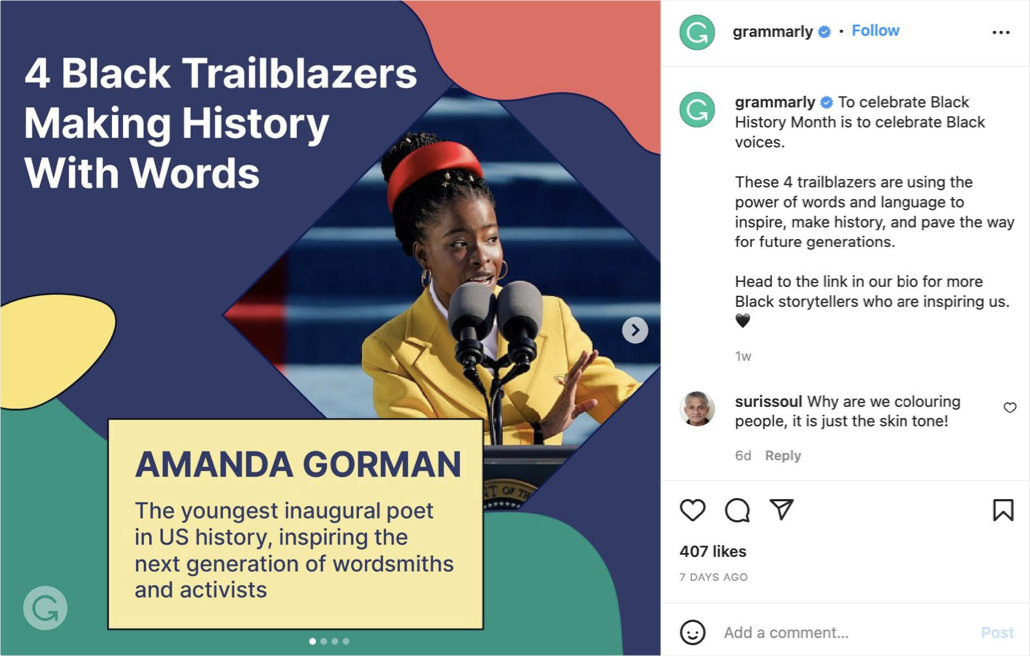How can a company meaningfully celebrate Black History Month?
This might feel complicated for white business leaders and marketing managers. We get it. Trying to show your support in a meaningful way can be intimidating. Where do you even begin if your company has never spoken out before? Is it better not to speak at all, at the risk of sounding tone-deaf? And how do you avoid straying down a performative path?
You’re not wrong to tread with caution: In 2020, Barnes & Noble attempted to reimagine classic novels of the past with new covers featuring Black characters. The campaign was met with intense backlash as people accused the company of committing literary Blackface and criticized the failure of Barnes & Noble to shine the spotlight on Black authors. To the opposite effect, Barnes & Noble tokenized the Black community in favor of a twisted nod to white novelists.
Showing support as a company is nuanced. Good intentions just don’t cut it. But neither does remaining passive to the opportunity for change-making and amplification of Black voices.
Let’s dive in on why we celebrate in February, why February celebrations alone don’t cut it, and six ways you can lean in and continue to show up.
Why is Black History Month Celebrated in February?
The US and Canada celebrate Black History Month in February, the birthday month of Abraham Lincoln and Frederick Douglass. Lincoln was influential in ending slavery, while Douglass was a prominent leader of the abolitionist movement.
February became the month when Black Americans celebrated the emancipation of their ancestors, and the contributions of the Black community to the arts, science, activism, and the fabric of America. As Sara Clarke Kaplan, executive director of the Antiracist Research & Policy Center at American University, would put it: “There is no American history without African American history.”
Every Black History Month also has a theme, this year being Black Health and Wellness.
Why do we capitalize the letter ‘B’ in Black?
In light of the Black Lives Matter movement, publications and official dictionaries started to capitalize the letter ‘B’ in Black. This is because ‘Black,’ in the context of African Americans, is not merely a color. It encompasses a shared culture, deep history, and lived experience. Along the same vein, we wouldn’t write Latinx, Indigenous, or Native American in lowercase. And neither should we when referring to Black folx.
How can your company show up for Black History Month – and beyond?
Brands exert a strong influence on contemporary culture. By staying vocal about what you believe in, your brand has the power to shift the tides of systemic racism. In seeing your work, others may also be encouraged to follow suit.
Here are a few ways you can start.
1. Amplify Black voices
Your company’s platform is an opportunity to put your reach to good use. Highlight Black-owned enterprises and key actors in your industry, and uplift the voices who may not otherwise have access to as large of a following. Not only can you better educate your audience, but you may also be widening the diversity of people that these Black voices can reach. Speaking to the masses is essential, but making sure those masses are diverse has an equally significant impact.
EXAMPLE: #BlackTikTok Trailblazers Campaign 2022
While TikTok has faced backlash in the past for allegedly censoring videos by Black creators, they have chosen to celebrate Black History Month this year by doing the opposite. The social media giant has teamed up with iHeart Radio and AT&T Mobile to highlight Black musicians, artists, and creators through the #BlackTikTok Trailblazers campaign. A visit to the Discover page will show you headers to easily click through to TikToks by Black creators.
EXAMPLE: #ShareTheMicNow Instagram Takeovers
In 2020, the #ShareTheMicNow campaign was initiated to invite Black activists to take over the Instagram accounts of white women. Various speakers were then able to reach wider, more diverse audiences and spread knowledge that may not have reached those feeds otherwise.
2. Invest in the Black community
EXAMPLE: Cocokind’s Black History Month pledge
Skincare brand Cocokind has made a one-week pledge to donate 100 percent of their online profits to various organizations that support the Black community. Their caption also features a little more on how these groups help.
Resources: Where to donate
- The Black Youth Project is a US organization whose activities include community organizing, voter mobilization, and other social justice campaigns focused on black, feminist, and queer issues.
- Fifteen Percent Pledge has called on retailers to commit 15 percent of their shelf-space to Black-owned businesses, in proportion to the Black population in the US.
- The NAACP Legal Defense Fund fights for racial justice in the United States.
- The Thurgood Marshall College Fund provides assistance to students at Historically Black Colleges and Universities (HBCUs), representing over 300,000 students to date.
- The Black Art Futures Fund provides funding for Black-led and Black-benefitting arts and culture organizations.
3. Recenter the narrative on Black achievements
For much of history, the contributions of Black folx to society have gone unnoticed or been suppressed. Instead, recenter the narrative on the Black actors. In your own industry, who from the Black community helped pave your own path? Whose stories have not yet been told?
EXAMPLE: Rolla Skate Club
Rolla Skate Club released a blog post on Celebrating Black Rollerskating Culture to kickstart their Black History Month celebrations. The blog sheds light on the overt racism in early roller skating, as well as how the pastime was a reprieve for the Black community. They also feature a video poem by the African American Roller Skate Museum, which poignantly chronicles the history of roller skating in Black culture, and how it is intertwined with racism at the institutional level. Not only does it rehash a violent past, but it also celebrates how the Black community injected music and dance into roller-skating – giving birth to roller disco.
4. Talk about anti-racism with your team
Change starts from within, and the members of your company ultimately define its culture. We don’t expect all conversations to be easy, but your team must be able to talk about racial inequality, and how to be an anti-racist company. If your internal discussions aren’t aligned with the messages you’re putting out into the world, your brand’s integrity comes into question.
These talks may also address the diversity of your workplace. If you’re working for a white-owned company in a sea of predominantly white employees, it’s high time to start up discussions as to why.
EXAMPLE: McKinsey’s Diversity Wins Report
The McKinsey 2020 Diversity wins report showed that companies with greater diversity and representation were more likely to outperform competitors by 36 percent in profitability. The firm also suggests that ethnic diversity and performance go hand in hand, with more diverse companies much more likely to outperform their less-diverse counterparts–all this to say that diversity does more than just provide a favorable statistic.
McKinsey makes an excellent case for the economic value of diversity. But hiring diversely should not need to be justified by monetary gain.
Resource: The TIME’S UP guide to Building an Anti-Racist Workplace
TIME’S UP is a non-profit that aims to eradicate gender-based discrimination in society. The organization has published a guide on Building an Anti-Racist workplace, focusing on respectfully addressing BIPOC experiences, creating safer spaces for Black employees, and fostering conducive conversation for growth and learning.
5. Educate yourself and your audience
To continue celebrating is to continue learning. Try to deepen your understanding of perspectives on Blackness and Black culture. Listen to the voices who have, for so long, been oppressed. And share what you learn with your audience.
While Black history is filled with trauma and prejudice, we would also be doing wrong by the Black community to water down their stories to entirely center on suffering. Celebrate the triumphs, joys, and genius that the Black community brings to the world.
Here are a few resources you can check out:
Activists
- Brittany Packnett Cunningham is a vocal MSNBC analyst, educator, and author.
- Alicia Garza is the co-founder of the international #BlackLivesMatter movement.
- Layla F. Saad is a British activist and author.
Books
- Between the World and Me by Ta-Nehisi Coates is an essay penned by Coates to his son on the realities of being Black in the United States.
- So You Want to Talk About Race by Ijeoma Oluo addresses many pressing questions concerning systemic racism in the United States.
- The New Jim Crow: Mass Incarceration in the Age of Colorblindness by Michelle Alexander takes a look at racism at an institutional level, and argues that the justice system has not tackled racism, but merely redesigned it.
- Why I’m No Longer Talking to White People About Race by Renni Eddo-Lodge explores the intersectionality of gender, race, and class in the United Kingdom.
Podcasts
- Code Switch by NPR tackles the subject of race through a lens of empathy and humor.
- The Hella Black Podcast aims to educate and inform listeners on all things related to Blackness.
- The Stoop Podcast talks about Blackness and Black identity in the United States.
Films
- 13th by Ava du Vernay sheds light on the inequality of the justice system in the United States, as shown by the disproportionate incarceration of Black people.
- The Black Godfather by Reginald Hudlin highlights the story of Clarence Savant and his massive influence on the Western music industry.
- Summer of Soul (…Or, When the Revolution Could Not Be Televised) by Questlove is a sociopolitical commentary and celebration of Black music focused on the 1969 Harlem Cultural Festival, as well as the racial motivations preventing the festival’s televised release for over half a decade.
EXAMPLE: Grammarly
For Black History Month, Grammarly has highlighted numerous Black voices who are using words – be it through writing, poetry, or public speech – to advocate for the Black community. Grammarly features speakers like Amanda Gorman, Zaila Avant-garde, Ta-Nehisi Coates, and Noname, and is educating their audience on the ways they are championing change in society.
6. Don’t fall silent after the 28th
The best way to celebrate Black History Month all year long is simple: don’t stop recognizing Black people, the needs of the Black community, and the inequality that still exists.
Don’t stop fighting the good fight. Supporting the Black community is an ongoing commitment. If you had initiatives lined up to celebrate Black History Month, fantastic. If you didn’t, do better, and plan for next year. Affecting change at the systemic level requires sustained and consistent effort.
Continuously amplify Black voices. Continuously find ways to invest in or bring attention to Black-owned businesses and organizations. Acknowledge that the Black community has played a crucial role in helping society grow and progress. And educate both your internal team and your audience, who trust you enough to make your brand a part of their daily lives.
Moving forward as an ally
Our actions have repercussions far beyond what we realize. They also have the ability to affect change far beyond what we may currently believe.
For companies, Black History Month is a reminder to make decisions through a lens of empathy and compassion. While this month shows us how far we’ve come, it is also a reminder of how far we have yet to go.
You may not get it entirely right this year. But every new day is an opportunity to keep trying.
